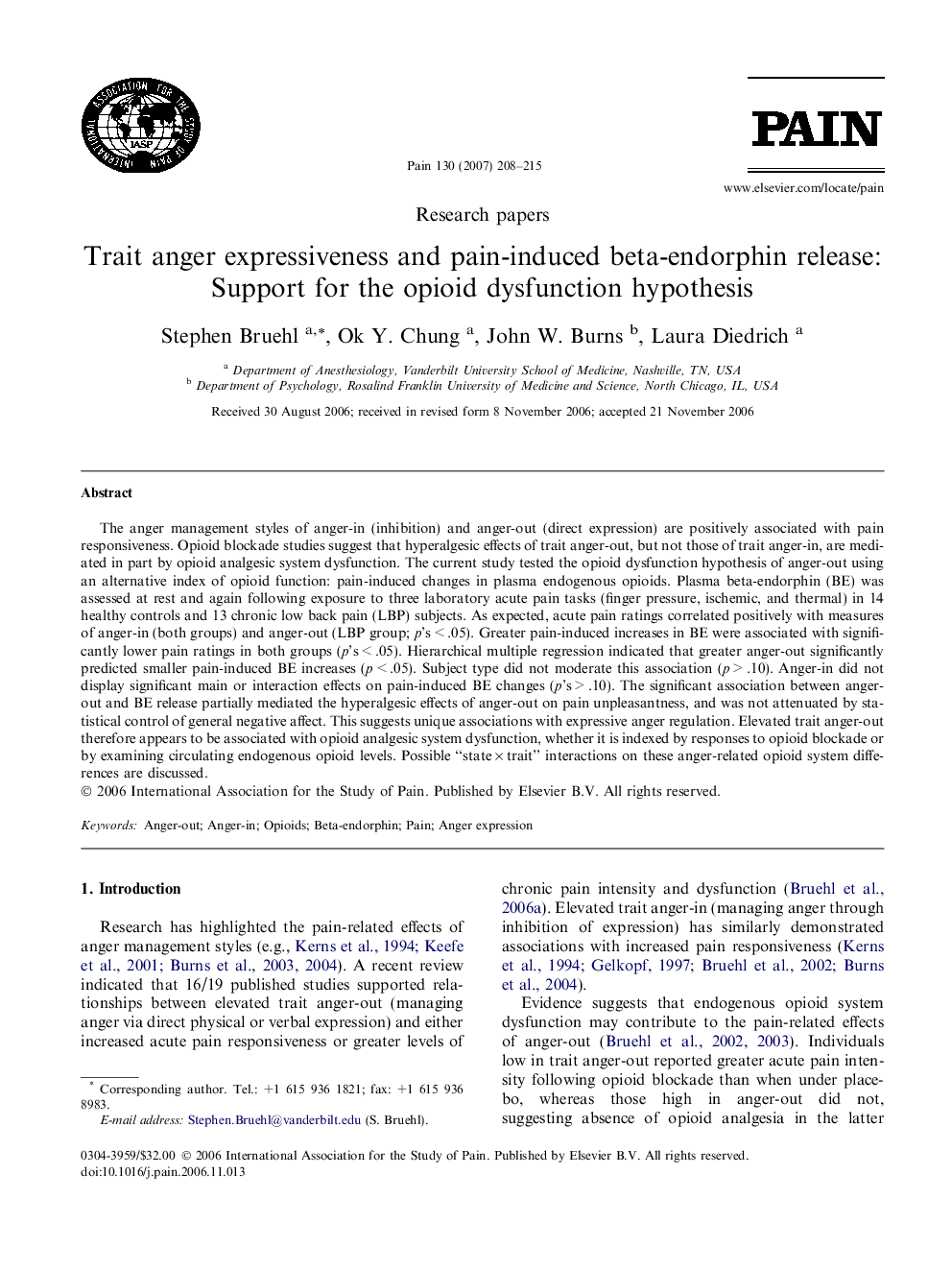| کد مقاله | کد نشریه | سال انتشار | مقاله انگلیسی | نسخه تمام متن |
|---|---|---|---|---|
| 915269 | 1473253 | 2007 | 8 صفحه PDF | دانلود رایگان |

The anger management styles of anger-in (inhibition) and anger-out (direct expression) are positively associated with pain responsiveness. Opioid blockade studies suggest that hyperalgesic effects of trait anger-out, but not those of trait anger-in, are mediated in part by opioid analgesic system dysfunction. The current study tested the opioid dysfunction hypothesis of anger-out using an alternative index of opioid function: pain-induced changes in plasma endogenous opioids. Plasma beta-endorphin (BE) was assessed at rest and again following exposure to three laboratory acute pain tasks (finger pressure, ischemic, and thermal) in 14 healthy controls and 13 chronic low back pain (LBP) subjects. As expected, acute pain ratings correlated positively with measures of anger-in (both groups) and anger-out (LBP group; p’s < .05). Greater pain-induced increases in BE were associated with significantly lower pain ratings in both groups (p’s < .05). Hierarchical multiple regression indicated that greater anger-out significantly predicted smaller pain-induced BE increases (p < .05). Subject type did not moderate this association (p > .10). Anger-in did not display significant main or interaction effects on pain-induced BE changes (p’s > .10). The significant association between anger-out and BE release partially mediated the hyperalgesic effects of anger-out on pain unpleasantness, and was not attenuated by statistical control of general negative affect. This suggests unique associations with expressive anger regulation. Elevated trait anger-out therefore appears to be associated with opioid analgesic system dysfunction, whether it is indexed by responses to opioid blockade or by examining circulating endogenous opioid levels. Possible “state × trait” interactions on these anger-related opioid system differences are discussed.
Journal: PAIN - Volume 130, Issue 3, August 2007, Pages 208–215